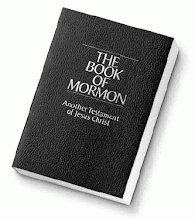Why do Mormons build temples?
The Lord has always commanded His people to build temples.
“Whenever the Lord has had a people on the earth who will obey his word, they have been commanded to build temples in which the ordinances of the gospel and other spiritual manifestations that pertain to exaltation and eternal life may be administered. In cases of extreme poverty or emergency, these ordinances may sometimes be done on a mountaintop. This may be the case with Mount Sinai and the Mount of Transfiguration. The tabernacle erected by Moses was a type of portable temple, since the Israelites were traveling in the wilderness.” (Bible Dictionary)
The best known temple mentioned in the Bible is that which was built in Jerusalem in the days of Solomon. Solomon’s temple took 8 years to complete. The walls were made of stone and were covered on the inside with carved wood and gold. Only the best of materials were used to construct the temple. When it was finished, Solomon knelt at the altar in the temple and offered a dedicatory prayer. (See 2 Chronicles:6)
To me, it makes sense that if God commanded His people to build temples in Bible times, then He would also command His people to build temples in our time. After all…isn’t God the same yesterday, today and forever?
What is the purpose of temples?
Temples are not used for weekly Sunday worship services. We have meetinghouses or chapels for the purpose of meeting on the Sabbath for Sunday worship.
Temples are places of learning where holy truths are taught. The principal purpose of temples is to provide the ordinances necessary for all of God’s children to enable them to return to dwell with Him.
“Temples are considered ‘houses of the Lord’ where Christ’s teachings are reaffirmed through marriage, baptism, and other ordinances that unite families for eternity. Inside, members learn more about the purpose of life and make covenants to serve Jesus Christ and their fellow man.” (Church News)
Temples are also a place for personal contemplation and prayer. For me, the temple is a sanctuary from the world. It’s a bit of heaven on earth. I love to go to the temple because of the peace that I feel. I feel closer to God in the temple than anywhere else. In my last entry I mentioned the temple open house. Before a temple is dedicated, it is open to the public for tours. At the Gila Valley temple dedication, the temple president’s wife mentioned in her talk that a friend of hers, who is not a member of our church attended the open house. After touring the temple her friend mentioned the peace that she felt while in the temple. She said that it reminded her of the scripture in Philippians 4:7 that talks about “the peace of God which passeth all understanding.” This is so very true. The temple is a place where the Holy Spirit and the love of God can be felt.
Because the temple is sacred to us and because we keep these things close to our hearts, people not of our faith accuse us of being secretive and assume that unrighteous things must be going on in the temple. That couldn’t be further from the truth. The ordinances and ceremonies of the temple are simple, beautiful, uplifting, and worthy of the presence of the Holy Spirit.
Why do Mormons perform temple ordinances vicariously for those who have died?
“A temple is literally a house of the Lord, a holy sanctuary in which sacred ceremonies and ordinances of the gospel are performed by and for the living and also in behalf of the dead… From Adam to the time of Jesus, ordinances were performed in temples for the living only. After Jesus opened the way for the gospel to be preached in the world of spirits, ceremonial work for the dead, as well as for the living, has been done in temples on the earth by faithful members of the Church. (Bible Dictionary)
Some people are confused as to why we would perform vicarious ordinances for those who have died. To me it makes perfect sense and is reflective of God’s love for ALL of His children. We believe that the ordinances performed in temples are essential for exaltation. Well…what about all of the people who never even had the opportunity to hear or learn about the gospel of Jesus Christ while they lived here on earth? Is it fair that they will be damned, only because they didn’t have that opportunity? No. God is a just and fair God and He will provide ALL of His children with the opportunity to accept the gospel of Jesus Christ either in this life or the next. Those who didn’t have the opportunity to learn the gospel while here on earth will have that chance in the Spirit World and then when the ordinances are performed vicariously for them in temples here on earth, they will have the choice to accept or reject this vicarious service. No one is forced to take upon themselves these ordinances. There is Agency in all things.
Blessings of the temple available to all
“It was never intended that knowledge of these temple ceremonies would be limited to a select few who would be obliged to ensure that others never learn of them. It is quite the opposite, in fact. With great effort we urge every soul to qualify and prepare for the temple experience.” (Boyd K. Packer)


![32134_1430100359850_1453093347_1088348_594193_n[1] 32134_1430100359850_1453093347_1088348_594193_n[1]](https://blogger.googleusercontent.com/img/b/R29vZ2xl/AVvXsEh4OVFc-IHTTwnnuuxeuPcIWIbe5mBkVgHUWYc4oZvR3qMhvjA332aHlB7hXESC6WZM7moFVfu3OYEvkRLEORhtmaD-grsxtEklFUVIH59SE8T9RQggd2uvu7ZXfnuroevUBcJ8GcdYzMS2/?imgmax=800)






